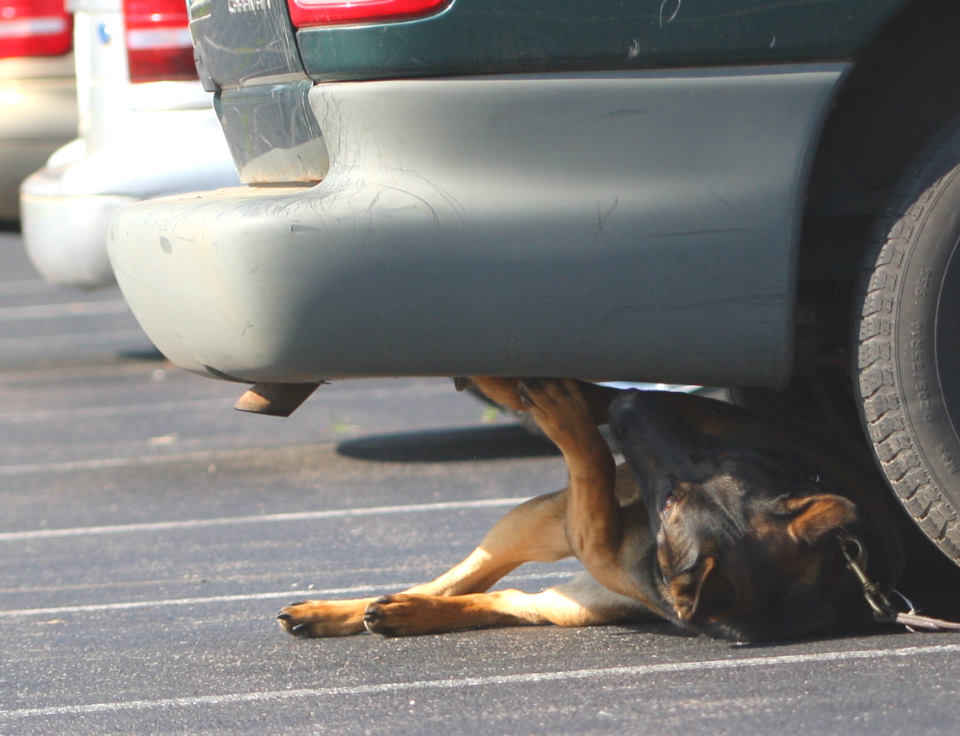
While the canine law enforcement profession progresses, some parts remain very much the same. As a new canine handler I was advised to keep training records but to write as little as possible. Those that came before me explained that writing too much would only provide the defense attorney with more things to attack. Of course, this idea only had merit if the attorney didn’t know anything about training drug detection dogs. It may have been partially true in the past but not today.
Training logs should paint a picture for the reader. They should show how the training has progressed as the dog and handler work together. They should also detail the work that the handler did while training the dog. You’re painting a picture that illustrates the reliability of you and the dog as a team.
So what should you write? First of all, training goals should always be clearly stated and directly addressed in the notes and comments section of your training logs. This is something that we emphasize for K9 training records in the PACKTRACK app and online software. While it’s different for each canine and exercise, there are standard elements that you should include in your training comments. Below are some areas to consider.
- Target odors. If the dog finds the target odor then be sure to say so. Describe the behavior change and the final response. List what you see when the dog detects the target odor. For example: “There was a head turn, closed mouth, breathing increase, excited posture, tail wagging at a more rapid pace. The dog then bracketed the target odor, tracing the odor to its source. Once at the source of the odor the dog came to the ultimate and final response of a sit.”
- No target odors. If there are blank areas (without target odors) in the exercise then be sure to note whether you determined that a target odor was present or not. For example, if an exercise has several vehicles but not all of them have target odors then you’ll want to note the K9’s response after smelling each car. If there was no behavior change then write that you knew, based on the dog’s response and your training, that the vehicle was a blank and therefore moved on to the next car.
- Proofing odors. If there is a proofing or novel odor in an exercise then you should mention in your records that the dog smelled at the odor and did not respond.
- Blank or controlled negative. If the whole exercise is a blank or controlled negative then you should explain that your dog inspected the entire area and, based on your training and the dog’s behavior, you determined that there was no target odor present.
- Similarity to real life deployments. Describe that you conducted the exercise as you would work the dog in real life. It can impact the dog and K9 handler’s training if, for example, you work the dog on lead on vehicle exteriors in real life settings but in training you cut the dog off lead to inspect a car exterior. Explicitly mention that this exercise matches how you work the dog in deployment scenarios.
- Corrective training. When working on specific training issues your notes should explain how the exercise is intended to improve or fix the problem. Any weaknesses or problems that you observe during training must be noted in your records. As trainers we must have a plan for correcting these issues and then create exercises focused on improving behavior. Your training comments appropriately document the team’s progress in each exercise and prove that the issue has been reliably corrected.
Documenting your training progress creates a complete picture of the quality of your training efforts and the reliability of your dog. These comments also show that you’re improving as a handler. Clear and accurate documentation shows that you’re educated about proper dog training techniques and diligent and competent in your profession.
Defense experts prefer to separate out training activities to imply issues or mistakes. However, training records should be taken as a whole. The totality of the K9 team’s records demonstrate the knowledge of the handler/trainer, the proficiency of the dog and the team’s joint capacity to improve and work together reliably.
A combination of the initial training and continued maintenance training, knowledge of the canine handler describing the training methods, and progress of the team proven through testing is needed testimony to paint a complete picture of reliability.


